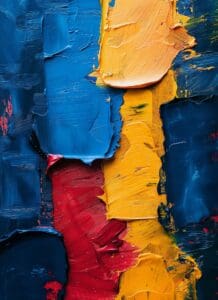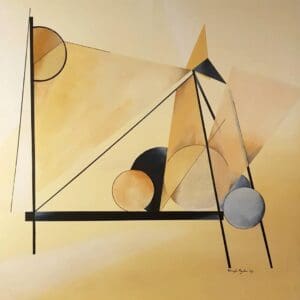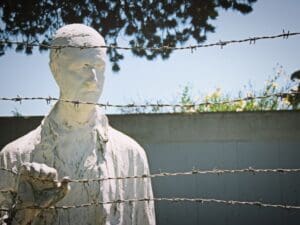Naum Gabo (August 5, 1890 – August 23, 1977) was an American ‘Constructivist’ sculptor of Belorussian birth. In 1910, he went to Munich for studying medicine and science related subjects. While studying physics and engineering, Gabo read the writings of Henri Bergson and participated in the lectures of art historian Heinrich Wölfflin that combined art and science. These lectures had a significant impact on Gabo. Naum’s romantic and literary bent was reflected in his early paintings. He began working using the ‘Stereometric Method’ of construction, while in Norway, and through this, contributed substantially to the growth of ‘Constructivism.’ Born as Naum Neemia Pevsner, the artist changed his name to Gabo to distinguish himself from his brother, the artist Antoine Pevsner. One of Gabo’s most famous works is his first masterpiece called the “Constructed Head No. 2” of 1916.
The “Constructed Head No. 2” dates to the period when Gabo first began expressing his theories in the form of art. He started by constructing the representations of heads and torsos, beginning with cardboard, then wood, and lastly metal. Gabo’s approach was completely radical with no casting and carving. The structure was open and cellular with intersecting planes rather than a closed solid piece of art. The original creation of “Constructed Head No. 2” was made from sheet-iron plates that had been galvanized and painted with yellow ochre paint.
The creation, after being exhibited in Moscow, and then Berlin & Holland, was sent back to the Soviet Union by mistake. Gabo got back the sculpture in pieces in the 1950s. He then reconstructed it. Naum reassembled it after stripping off the paint and later made six replicas from different mediums and of different sizes. Gabo created a plastic version of the “Constructed Head No. 2” in the mid 1920s in Germany and a phosphor-bronze copy was produced thirty years later. Both these sculptures were of the same scale as the original. The original “Constructed Head No. 2” was exhibited, along with one of the replicas made of metal, in 1968.
In 1920, Gabo had also created a sculpture using a motor to spin a steel blade, thereby pioneering a new kind of sculpture called ‘Kinetic Sculpture.’ In August 1920, Gabo wrote the ‘Realistic Manifesto’ along with Antoine Pevsner and proclaimed the principles of pure ‘Constructivism’ and criticised ‘Futurism’ & ‘Cubism,’ as not being complete ‘Abstract Arts.’ Gabo indicated that the spiritual experience was the basis of all artistic creations. Working in Russia in the revolutionary period, Gabo had to execute his creativity using poor-quality raw materials, and many of his creations were either lost or spoilt during that time. The original “Constructed Head No. 2” however, remains as one of his most admired and revolutionary masterpieces.
Disclaimer: The views and opinions expressed in this article are those of the authors and do not necessarily reflect the official policy or position of Irish Artmart.





